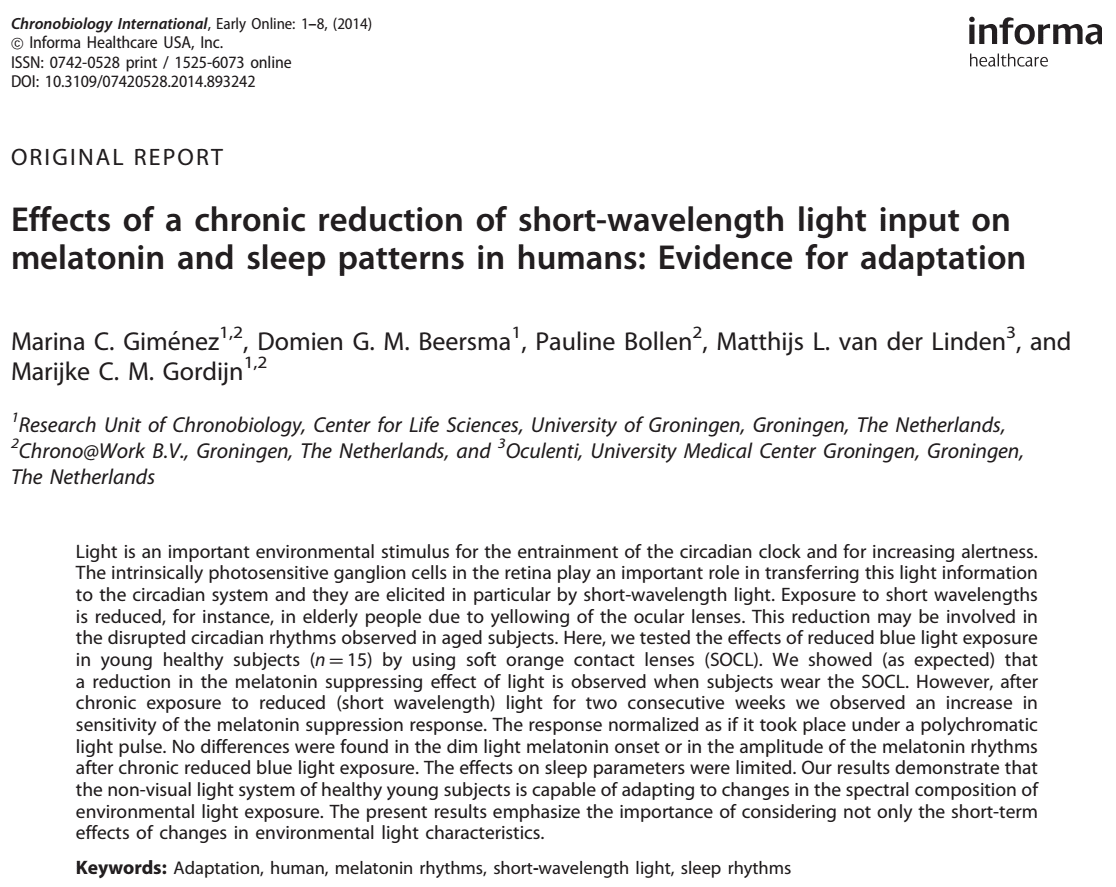
Light is an important environmental stimulus for the entrainment of the circadian clock and for increasing alertness. The intrinsically photosensitive ganglion cells in the retina play an important role in transferring this light information
to the circadian system and they are elicited in particular by short-wavelength light. Exposure to short wavelengths is reduced, for instance, in elderly people due to yellowing of the ocular lenses. This reduction may be involved in
the disrupted circadian rhythms observed in aged subjects. Here, we tested the effects of reduced blue light exposure in young healthy subjects (n ¼ 15) by using soft orange contact lenses (SOCL). We showed (as expected) that
a reduction in the melatonin suppressing effect of light is observed when subjects wear the SOCL. However, after chronic exposure to reduced (short wavelength) light for two consecutive weeks we observed an increase in
sensitivity of the melatonin suppression response. The response normalized as if it took place under a polychromatic light pulse. No differences were found in the dim light melatonin onset or in the amplitude of the melatonin rhythms
after chronic reduced blue light exposure. The effects on sleep parameters were limited. Our results demonstrate that the non-visual light system of healthy young subjects is capable of adapting to changes in the spectral composition of
environmental light exposure. The present results emphasize the importance of considering not only the short-term effects of changes in environmental light characteristics.
http://www.tandfonline.com/doi/abs/10.3109/07420528.2014.893242?journalCode=icbi20
